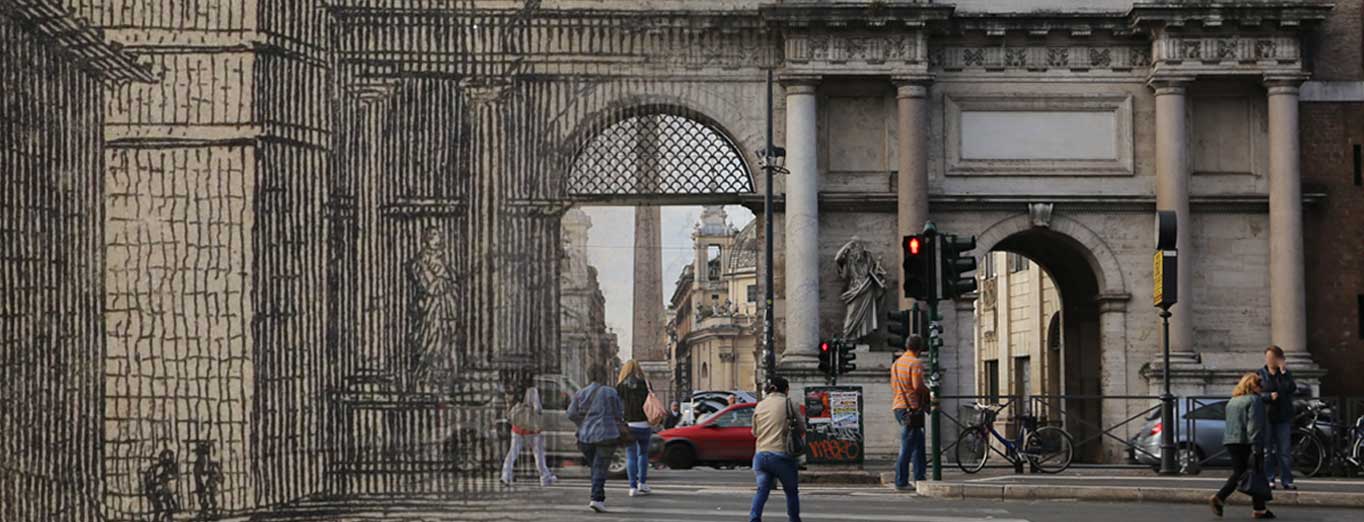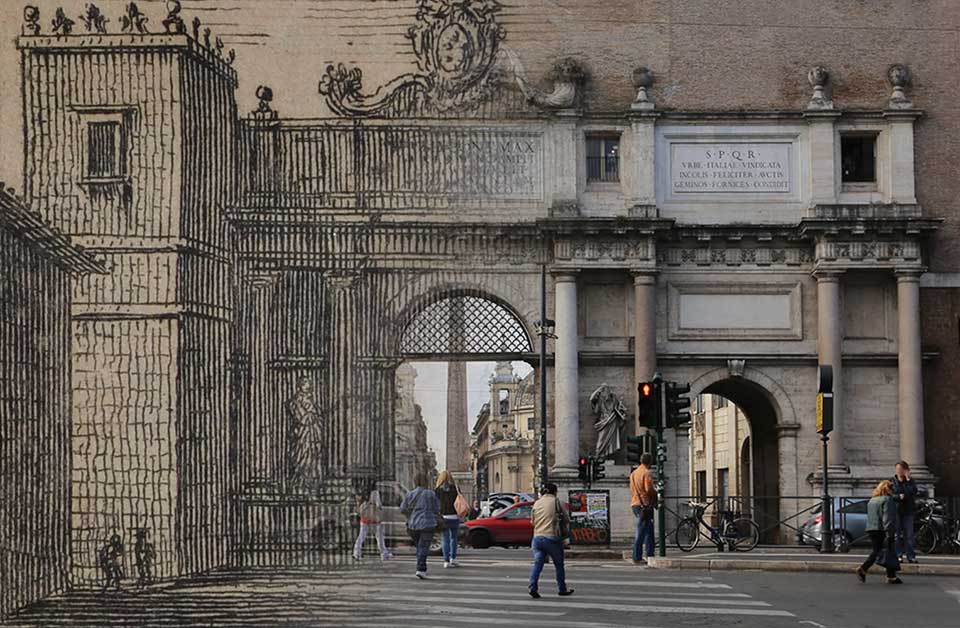Cities in Text: Rome explores the complex and historical layers of the Eternal City through the study of guidebooks with curated itineraries published in the 16th, 17th, and 18th centuries that are presented on this website and accessible on mobile devices.
Cities are not built in a day. They are the result of years of development and change. No other city in the world expresses this concept more clearly than Rome. Thousands of years of continuous urban development and regeneration have created a multi-faceted and sophisticated city that can present challenges for contemporary researchers and explorers.
Rome has been a destination for travelers - whether on pilgrimage, grand tour, study, or holiday - for nearly two millennia. Those who documented the city during their lifetimes have left unique records describing Rome's physical and urban conditions, providing specialized resources to contemporary scholars.
Cities in Text: Rome provides access to selected travel guides, allowing one to trace the city’s urban and architectural development. These guides, housed in the Library of the American Academy in Rome, include Bernardo Gamucci’s Dell’Antichità della Città di Roma, published in 1565, Federico Franzini’s Descrittione di Roma Antica e Moderna, published in 1643, and Giuseppe Vasi’s Itinerario Istruttivo Diviso in Otto Giornate, published in 1777. These specific texts were chosen for the quality of their scholarship, observations, illustrations, maps, and itineraries. Giuseppe Vasi’s text has been digitized, transcribed, translated, illustrated, and geo-located and is available on this website and in the printed volume Eight Days in Rome with Giuseppe Vasi. Vasi’s curated walking tour allows scholars and students to access library resources while exploring the city on-site with this interactive website. Gamucci and Franzini’s texts are being transcribed and translated and will soon be available on the website. The project's next phase will expand the textual sources and enhance the walking tours with additional content. The curated walking tours of Rome found in these texts will enable scholars and students alike direct access to library resources while exploring the city.


